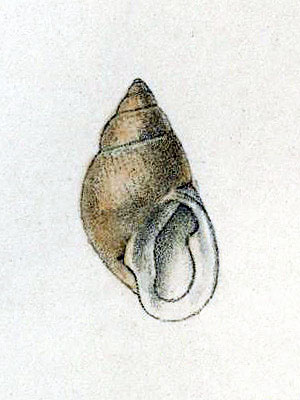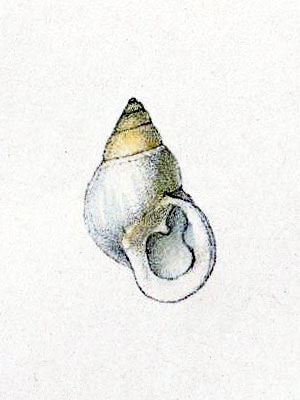Unperforated Tree-Snail (Partula dentifera ssp. imperforata)
This form was described in 1884, originally as a distinct species.
The Unperforated Tree-Snail was endemic to the island of Ra’iatea, Society Islands, where it inhabited the Mt. Tefatua, as well as many of the smaller valleys on the western side of the island at elevations from sea-level to about 700 m.
This form differs from the nominate form by several characters, for example by its narrower umbilicus, which sometimes is fully closed. [1]
***
The Unperforated Tree-Snail, like all its congeners from the lowland areas of Ra’iatea, is now extinct.
*********************
References:
[1] Justin Gerlach: Icons of Evolution: Pacific Island Tree-Snails of the family Partulidae. Phelsuma Press 2016
*********************

(public domain)
*********************
edited: 21.10.2017


